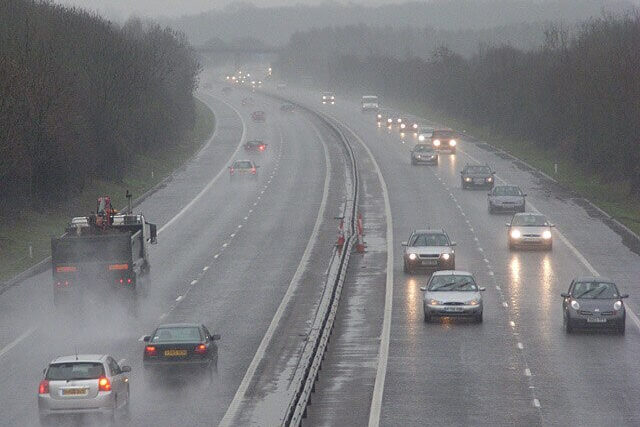
Toxic and carcinogenic pollution pouring from 25,000 road outfalls into rivers across England is being overlooked by politicians and regulators, MPs have been told.
Runoff from roads, containing harmful particles from tyres and brakes as well as pollutants from fuel and oil spills, washes into rivers after rainfall and can devastate aquatic ecosystems. By increasing toxicity, it undermines the overall health of waterways and is responsible for 18% of the failures preventing all rivers from achieving good ecological and chemical status.
However, unlike sewage discharges from storm overflows, pollution from road runoff is neither regulated nor monitored by the Environment Agency, despite its legal duty to address all sources of river pollution, MPs on the Environmental Audit Committee heard.
There is not a single permit for a highway discharge in England, in contrast to sewage outfalls from water companies, which are both monitored and regulated by the Agency.
Jo Bradley, Director of Operations at Stormwater Shepherds, told MPs that runoff from the road network was toxic and carcinogenic, containing heavy metals, hydrocarbons and microplastics. Of the 25,000 road outfalls, National Highways has identified 126 as high-risk and aims to mitigate pollution from these sites by 2030.
But Bradley said: “All 25,000 of these outflows are causing toxic pollution every time it rains. While sewage pollution attracts all the attention and coverage – with £56bn earmarked to address it, just a few million is invested into addressing pollution from these 25,000 road outfalls.
“This pollution contains microplastics, hydrocarbons, toxic metals and chemicals. It is carcinogenic, it gets into the water system … but no one is measuring these harms. No one is interested.”
The committee was told that the Cunliffe review into the water sector makes little reference to the issue of toxic pollution from road runoff. Bradley emphasised that this form of pollution must be addressed in the forthcoming white paper arising from the review.
A total of 25,000 road runoff sites have been mapped, each discharging a toxic mixture of harmful chemicals into England’s rivers.
Catherine Moncrieff, Head of Policy and Engagement at the Chartered Institution of Environmental and Water Management, told MPs that the problem was “flying under the radar”.
“The problem of highway pollution is increasing, the issue is getting worse.”
The Environment Agency has acknowledged that while it does not routinely monitor road runoff, pollution from highways and urban areas represents a serious concern.
Nick Harris, Chief Executive of National Highways, said around 250 high-risk sites requiring mitigation by 2030 had been identified out of 1,236 outfalls inspected, with work completed at 40 sites to date.
“We should care very much about this pollution going into the environment,” he said. “The commitment we have made is to address the high-risk sites by 2030.”
——————————————————————————
At Natural World Fund, we are passionate about restoring habitats in the UK to halt the decline in our wildlife.

